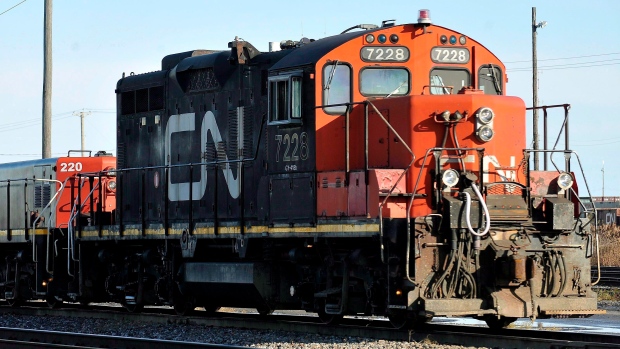May 18, 2016
CN and CP railways eyeing for more layoffs

Canada’s two major railways are slashing expenses and eyeing more layoffs amid a slump in freight made worse by the fires in Northern Alberta.
Canadian National Railway Co. has laid off 1,200 people from its staff of about 23,000 and parked 400 locomotives or 20 per cent of its fleet. Jean-Jacques Ruest, CN’s marketing chief, said there are “probably more layoffs” to come.
“There is a challenge in the industry with overall demand and CN is feeling it like many others,” Mr. Ruest said on Tuesday at an investors’ conference in Boston, where he and Canadian Pacific Railway Ltd.’s operating chief Keith Creel laid out how their respective companies are responding to cargo-volume slumps of at least 10 per cent this year.
The declines are caused by a handful of forces: a weak North American economy, poor demand for coal, a steel-making slump and a prolonged plunge in oil prices that has made moving it by rail unaffordable.
At Calgary-based CP, the company has idled 665 locomotives, slashed the capital-expenses budget by $400-million to $1.1-billion and laid off about 1,300 people. “I think there’s more to come. Is it 100, 200 [people]? I’m not certain,” said Mr. Creel. “But I still think there’s more opportunity … becoming better railroaders and becoming more efficient.”
Analysts have slashed profit expectations for the major North American railroads amid a drop in a range of cargo. Debt-rating agency Moody’s Investors Service this week downgraded the sector’s outlook to negative from stable, citing “long-lasting declines” in freight and an “unprecedented drop in coal shipments.”
“From a demand perspective, we’ve got a lot of headwinds,” Mr. Creel said.
Mr. Creel said CP’s freight volumes are lower than forecast but the company is sticking with its call for double-digit profit growth this year. However, some of that rise in earnings was to come from an increase in oil shipments from the Alberta oil sands, where much of the production has been halted amid forest fires.
“I saw this morning in the paper, I think the fires are now turned and heading toward the refineries. Now, if that happens, that’s obviously something we’ve got to keep a close eye on because that could affect volumes, more so than what we’re experiencing today,” Mr. Creel said.
CN’s Mr. Ruest said the Alberta fires posed a “short-term” threat to the “very, very weak” crude-by-rail business, which has fallen by 50 per cent, year over year. The real threat remains pipelines, which have plenty of capacity and are a far cheaper way to move oil, he said.
“Even though we do not load at Fort McMurray, the product we load at Edmonton and Hardisty does come from the Fort McMurray area by pipeline,” Mr. Ruest said.
“None of these [oil-sands] plants have been really damaged but they had to shut down because their labour had to leave town. The issue with heavy crude in Alberta is not so much the forest fire, it’s the capacity [on the] pipeline that is readily available.”


